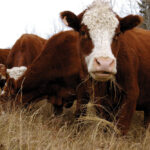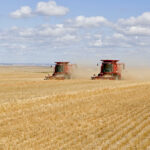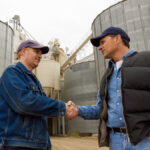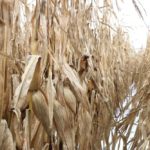Reading Time: 3 minutes Forget waterhemp. Cannabis might be Canada’s fastest spreading weed. Since being legalized in October 2018, cannabis production exploded across the country. From oils and edibles to dried flowers and other products, consumer demand continues to rise. But regulations, production woes and massive overcapacity have dragged the industry into a period of consolidation. The overall market […] Read more

The cannabis market is huge, but so are the losses
The sector wants lower taxes and less regulation, but over-expansion has crippled many companies

Approach carbon markets with an open mind, says proponent
Farmers need to consider what the developing carbon market could do for their business
Reading Time: 3 minutes Glacier FarmMedia – Despite all the uncertainties, carbon markets are an opportunity for farmers and should be seen as a business opportunity, says the head of the Alberta-based non-profit Biological Carbon Canada. “Carbon represents a brand new market,” Graham Gilchrist said at a recent virtual event hosted by an Ontario input supplier and grain dealer. […] Read more

Too much red tape in gene editing, says expert
That’s stifling advances and fuelling public skepticism, says American professor
Reading Time: 3 minutes Glacier FarmMedia – Regulations on gene editing of animals are fuelling negative public perceptions of the technology and stifling innovation in the livestock sector, according to an expert in animal genomics and biotechnology. “I predict there’s going to be a targeted activist campaign against gene editing in food production for a number of reasons,” Alison […] Read more

The reason why some cattle produce less methane
Research suggests emissions could be lowered by breeding for specific ‘microbial genes’
Reading Time: 2 minutes Glacier FarmMedia – Methane-reducing feed ingredients have the potential to significantly reduce the amount of greenhouse gas emitted by livestock. But so do breeding programs that focus on the DNA of an animal’s gut bacteria, says a U.K. researcher. Researchers at SRUC (Scotland’s Rural College) measure methane emissions and feed efficiency from cattle using respiration chambers. They […] Read more

There’s a path to reduced fertilizer emissions but it has challenges
More uptake of 4R and better application technology are key but so is providing the right incentives
Reading Time: 3 minutes Glacier FarmMedia – Major reductions in greenhouse gas emissions from fertilizer use are possible through 4R nutrient management, according to researchers from the University of Guelph. But while the 4R concept is good (right source, right time, right rate and right placement), truly significant reductions lean heavily on achieving each factor simultaneously, said Claudia Wagner-Riddle, […] Read more

What happens when the big fish eat all the smaller ones?
Big farms want more land but they also need smaller farms to buy their used equipment
Reading Time: 3 minutes Glacier FarmMedia – Large farms in Canada continue to grow at the expense of small and medium-size ones — and at an accelerating pace, says a new report. The reality is that any talk of “the ‘average’ farm is all but meaningless,” says one of its authors. “Today, increasing average farm size is not due […] Read more

Level-headed thinking — not unbridled anger — builds prosperity
The U.S. situation is a lesson on what happens when people can no longer see other points of view
Reading Time: 2 minutes Our closest, most important social and economic neighbour is having a rough time right now. As Canadians and members of the agriculture sector, we need to pay closer attention to it. That doesn’t mean speculating on how we might be economically impacted either. We need to watch the United States and learn what happens when […] Read more

How Ontario’s new DON testing cost-share program works
With vomitoxin (DON) levels so prevalent in this year’s corn crop, the Ontario Soil and Crop Improvement Association (OSCIA) says a new DON testing cost-sharing initiative will help producers strategically market their grain. Why it matters: OSCIA says cost-sharing will help farmers know how severe their deoxynivalenol (DON) issues are, and how to market their […] Read more

